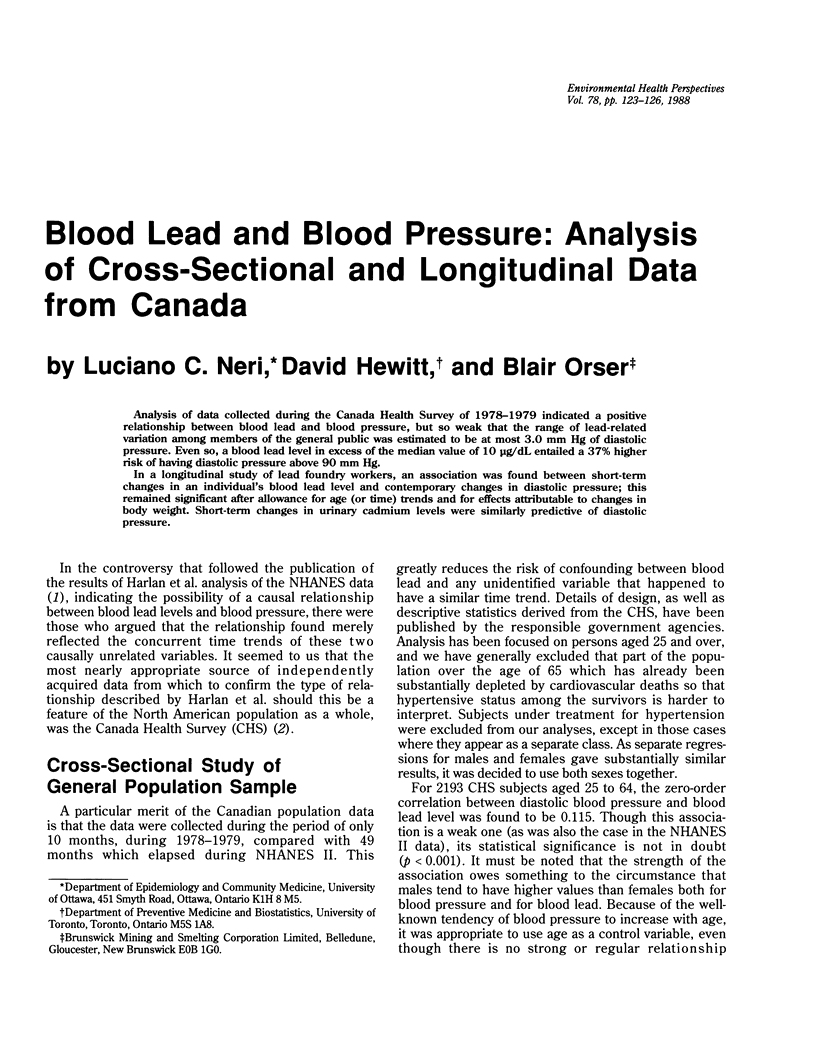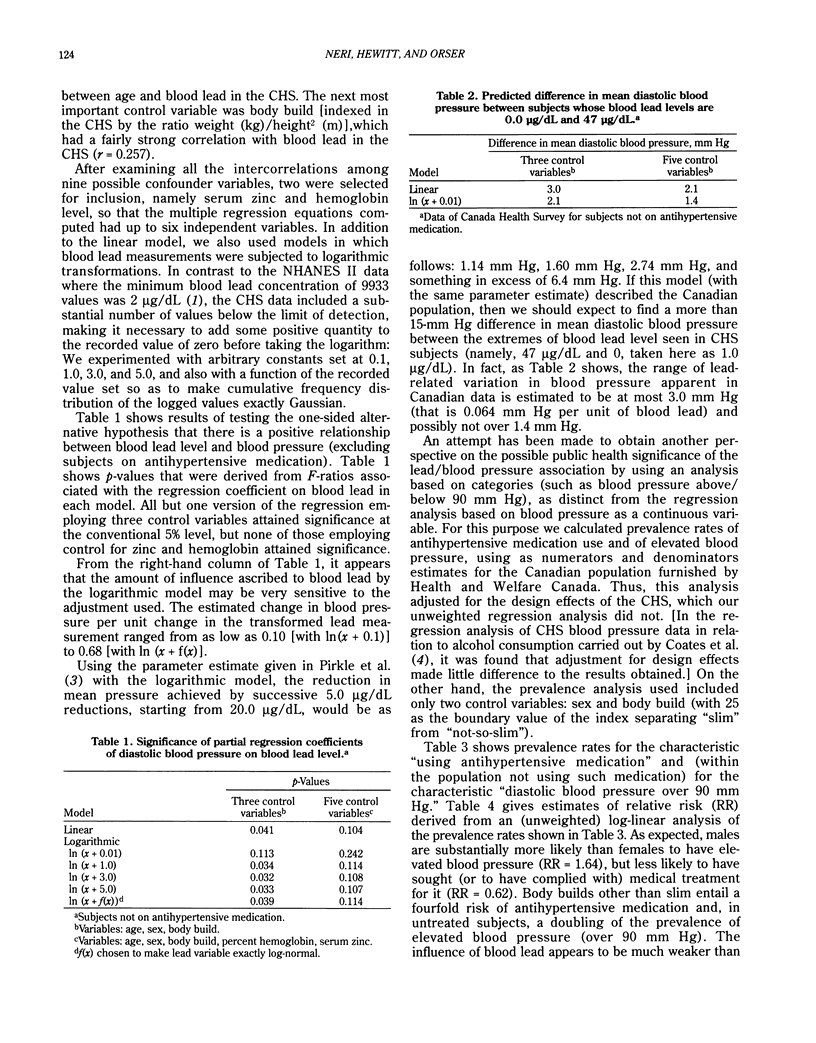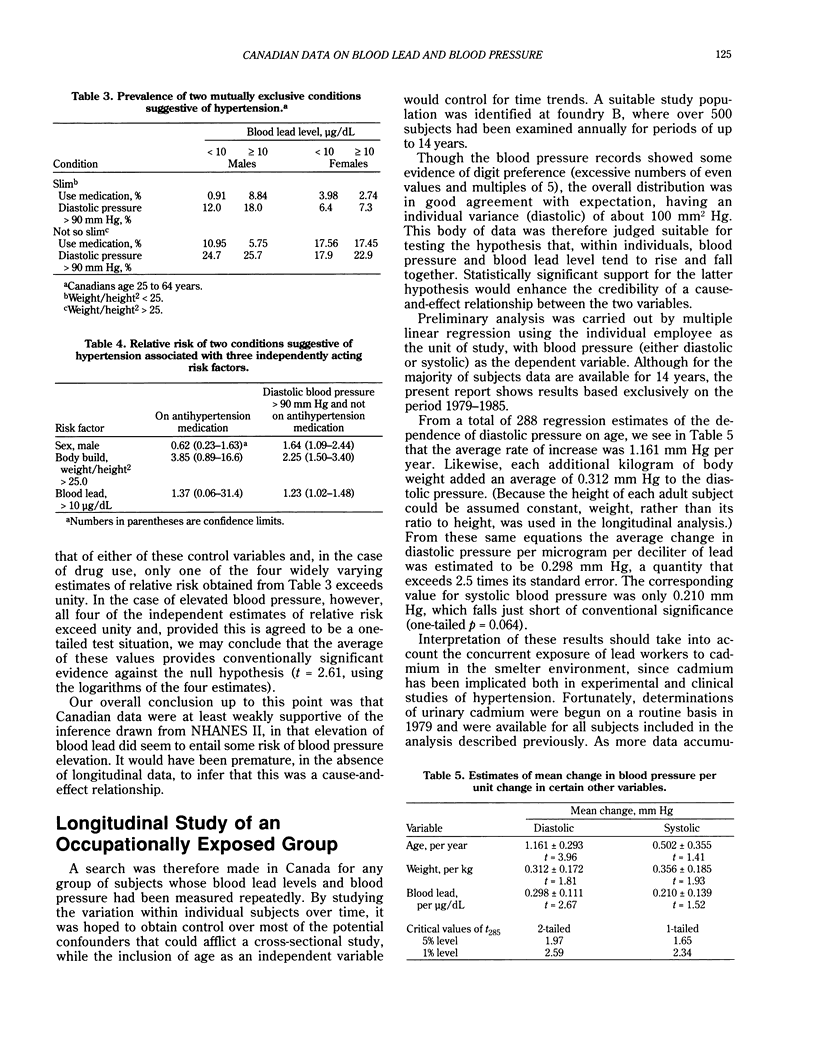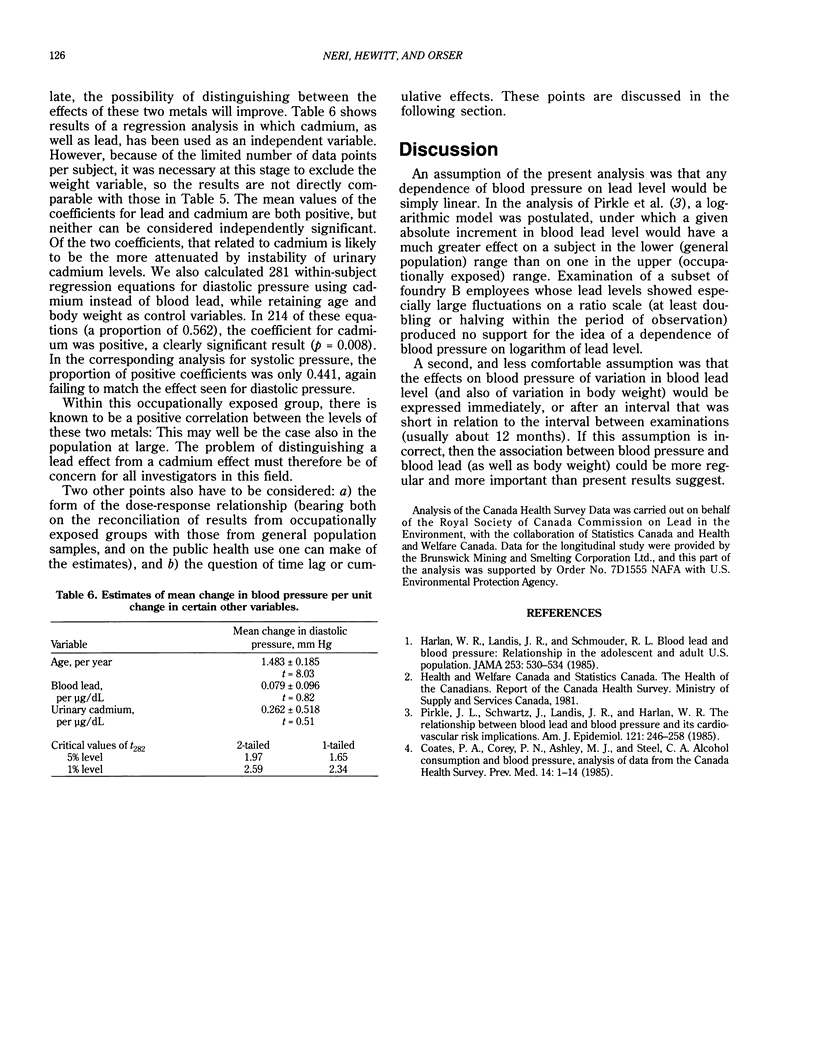Abstract
Analysis of data collected during the Canada Health Survey of 1978-1979 indicated a positive relationship between blood lead and blood pressure, but so weak that the range of lead-related variation among members of the general public was estimated to be at most 3.0 mm Hg of diastolic pressure. Even so, a blood lead level in excess of the median value of 10 micrograms/dL entailed a 37% higher risk of having diastolic pressure above 90 mm Hg. In a longitudinal study of lead foundry workers, an association was found between short-term changes in an individual's blood lead level and contemporary changes in diastolic pressure; this remained significant after allowance for age (or time) trends and for effects attributable to changes in body weight. Short-term changes in urinary cadmium levels were similarly predictive of diastolic pressure.
Full text
PDF



Selected References
These references are in PubMed. This may not be the complete list of references from this article.
- Coates R. A., Corey P. N., Ashley M. J., Steele C. A. Alcohol consumption and blood pressure: analysis of data from the Canada Health Survey. Prev Med. 1985 Jan;14(1):1–14. doi: 10.1016/0091-7435(85)90016-7. [DOI] [PubMed] [Google Scholar]
- Harlan W. R., Landis J. R., Schmouder R. L., Goldstein N. G., Harlan L. C. Blood lead and blood pressure. Relationship in the adolescent and adult US population. JAMA. 1985 Jan 25;253(4):530–534. doi: 10.1001/jama.253.4.530. [DOI] [PubMed] [Google Scholar]
- Pirkle J. L., Schwartz J., Landis J. R., Harlan W. R. The relationship between blood lead levels and blood pressure and its cardiovascular risk implications. Am J Epidemiol. 1985 Feb;121(2):246–258. doi: 10.1093/oxfordjournals.aje.a113995. [DOI] [PubMed] [Google Scholar]


